Edible Flowers: Antioxidant Compounds and Their Functional Properties
Abstract
1. Introduction
2. The Variant of Edible Flowers
3. Antioxidant Activity
4. Anti-Inflammatory
5. Antimicrobial
6. Anticancer
7. Neuroprotective Agent
8. Antidiabetic
9. Uricosuric Agent
10. Anti-Hemolytic
11. Conclusions
Author Contributions
Funding
Acknowledgments
Conflicts of Interest
References
- Mlcek, J.; Rop, O. Fresh edible flowers of ornamental plants—A new source of nutraceutical foods. Trends Food Sci. Technol. 2011, 22, 561–569. [Google Scholar] [CrossRef]
- Takahashi, J.A.; Rezende, F.A.G.G.; Moura, M.A.F.; Dominguete, L.C.B.; Sande, D. Edible flowers: Bioactive profile and its potential to be used in food development. Food Res. Int. 2020, 129. [Google Scholar] [CrossRef] [PubMed]
- Gradinaru, G.; Biliaderis, C.G.; Kallithraka, S.; Kefalas, P.; Garcia-Viguera, C. Thermal stability of Hibiscus sabdariffa L. anthocyanins in solution and in solid state: Effects of copigmentation and glass transition. Food Chem. 2003, 83, 423–436. [Google Scholar] [CrossRef]
- Maciel, L.G.; do Carmo, M.A.V.; Azevedo, L.; Daguer, H.; Molognoni, L.; de Almeida, M.M.; Granato, D.; Rosso, N.D. Hibiscus sabdariffa anthocyanins-rich extract: Chemical stability, in vitro antioxidant and antiproliferative activities. Food Chem. Toxicol. 2018, 113, 187–197. [Google Scholar] [CrossRef] [PubMed]
- Fernandes, L.; Casal, S.; Pereira, J.A.; Saraiva, J.A.; Ramalhosa, E. Edible flowers: A review of the nutritional, antioxidant, antimicrobial properties and effects on human health. J. Food Compos. Anal. 2017, 60, 38–50. [Google Scholar] [CrossRef]
- Braun, N.A.; Kohlenberg, B.; Sim, S.; Meier, M.; Hammerschmidt, F.J. Jasminum flexile flower absolute from India—A detailed comparison with three other jasmine absolutes. Nat. Prod. Commun. 2009, 4, 1239–1250. [Google Scholar] [CrossRef] [PubMed]
- Sommano, S.; Kerdtongmee, P.; Chompoo, M.; Nisoa, M. Fabrication and characteristics of phase control microwave power for jasmine volatile oil extraction. J. Essent. Oil Res. 2015, 27, 316–323. [Google Scholar] [CrossRef]
- Wathoni, N.; Haerani, A.; Yuniarsih, N.; Haryanti, R. A Review on Herbal Cosmetics in Indonesia. Int. J. Appl. Pharm. 2018, 10, 13. [Google Scholar] [CrossRef]
- Adliani, N. Lipstick Formulation Using Natural Dye from Etlingera elatior (Jack) R.M.Sm. Extract. J. Pharm. Pharmacol. 2012, 1, 87–94. [Google Scholar] [CrossRef]
- Chong, F.C.; Gwee, X.F. Ultrasonic extraction of anthocyanin from Clitoria ternatea flowers using response surface methodology. Nat. Prod. Res. 2015, 29, 1485–1487. [Google Scholar] [CrossRef]
- Zakaria, N.N.A.; Okello, E.J.; Howes, M.J.; Birch-Machin, M.A.; Bowman, A. In vitro protective effects of an aqueous extract of Clitoria ternatea L. flower against hydrogen peroxide-induced cytotoxicity and UV-induced mtDNA damage in human keratinocytes. Phyther. Res. 2018, 32, 1064–1072. [Google Scholar] [CrossRef] [PubMed]
- Qing, L.S.; Xue, Y.; Zhang, J.G.; Zhang, Z.F.; Liang, J.; Jiang, Y.; Liu, Y.M.; Liao, X. Identification of flavonoid glycosides in Rosa chinensis flowers by liquid chromatography-tandem mass spectrometry in combination with 13C nuclear magnetic resonance. J. Chromatogr. A 2012, 1249, 130–137. [Google Scholar] [CrossRef]
- Pinakin, D.J.; Kumar, V.; Suri, S.; Sharma, R.; Kaushal, M. Nutraceutical potential of tree flowers: A comprehensive review on biochemical profile, health benefits, and utilization. Food Res. Int. 2020, 127, 108724. [Google Scholar] [CrossRef] [PubMed]
- Zheng, J.; Meenu, M.; Xu, B. A systematic investigation on free phenolic acids and flavonoids profiles of commonly consumed edible flowers in China. J. Pharm. Biomed. Anal. 2019, 172, 268–277. [Google Scholar] [CrossRef] [PubMed]
- Morais, S.G.G.; da Silva Campelo Borges, G.; dos Santos Lima, M.; Martín-Belloso, O.; Magnani, M. Effects of probiotics on the content and bioaccessibility of phenolic compounds in red pitaya pulp. Food Res. Int. 2019, 126, 108681. [Google Scholar] [CrossRef]
- Manach, C.; Mazur, A.; Scalbert, A. Polyphenols and prevention of cardiovascular diseases. Curr. Opin. Lipidol. 2005, 16, 77–84. [Google Scholar] [CrossRef]
- Baessa, M.; Rodrigues, M.J.; Pereira, C.; Santos, T.; da Rosa Neng, N.; Nogueira, J.M.F.; Barreira, L.; Varela, J.; Ahmed, H.; Asif, S.; et al. A comparative study of the in vitro enzyme inhibitory and antioxidant activities of Butea monosperma (Lam.) Taub. and Sesbania grandiflora (L.) Poiret from Pakistan: New sources of natural products for public health problems. S. Afr. J. Bot. 2019, 120, 146–156. [Google Scholar] [CrossRef]
- Ghasemzadeh, A.; Jaafar, H.Z.E.; Rahmat, A.; Ashkani, S. Secondary metabolites constituents and antioxidant, anticancer and antibacterial activities of Etlingera elatior (Jack) R.M.Sm grown in different locations of Malaysia. BMC Complement. Altern. Med. 2015, 15, 1–10. [Google Scholar] [CrossRef]
- Ang, L.Z.P.; Hashim, R.; Sulaiman, S.F.; Coulibaly, A.Y.; Sulaiman, O.; Kawamura, F.; Salleh, K.M. In vitro antioxidant and antidiabetic activites of Gluta torquata. Ind. Crop. Prod. 2015, 76, 755–760. [Google Scholar] [CrossRef]
- Das, B.; De, A.; Das, M.; Das, S.; Samanta, A. A new exploration of Dregea volubilis flowers: Focusing on antioxidant and antidiabetic properties. S. Afr. J. Bot. 2017, 109, 16–24. [Google Scholar] [CrossRef]
- Lin, H.; Tu, C.; Niu, Y.; Li, F.; Yuan, L.; Li, N.; Xu, A.; Gao, L.; Li, L. Dual actions of norathyriol as a new candidate hypouricaemic agent: Uricosuric effects and xanthine oxidase inhibition. Eur. J. Pharmacol. 2019, 853, 371–380. [Google Scholar] [CrossRef]
- Vauzour, D.; Vafeiadou, K.; Rodriguez-Mateos, A.; Rendeiro, C.; Spencer, J.P.E. The neuroprotective potential of flavonoids: A multiplicity of effects. Genes Nutr. 2008, 3, 115–126. [Google Scholar] [CrossRef]
- Zhao, L.; Fan, H.; Zhang, M.; Chitrakar, B.; Bhandari, B.; Wang, B. Edible flowers: Review of flower processing and extraction of bioactive compounds by novel technologies. Food Res. Int. 2019, 126. [Google Scholar] [CrossRef]
- Cavaiuolo, M.; Cocetta, G.; Ferrante, A. The antioxidants changes in ornamental flowers during development and senescence. Antioxidants 2013, 2, 132. [Google Scholar] [CrossRef]
- Kaisoon, O.; Siriamornpun, S.; Weerapreeyakul, N.; Meeso, N. Phenolic compounds and antioxidant activities of edible flowers from Thailand. J. Funct. Foods 2011, 3, 88–99. [Google Scholar] [CrossRef]
- Li, Z.; Lee, H.W.; Liang, X.; Liang, D.; Wang, Q.; Huang, D.; Ong, C.N. Profiling of phenolic compounds and antioxidant activity of 12 cruciferous vegetables. Molecules 2018, 23, 1139. [Google Scholar] [CrossRef]
- Mahn, A.; Reyes, A. An overview of health-promoting compounds of broccoli (Brassica oleracea var. italica) and the effect of processing. Food Sci. Technol. Int. 2012, 18, 503–514. [Google Scholar] [CrossRef]
- Abudunia, A.M.; Marmouzi, I.; Faouzi, M.E.A.; Ramli, Y.; Taoufik, J.; El Madani, N.; Essassi, E.M.; Salama, A.; Khedid, K.; Ansar, M.; et al. Activité anti-candidose, antibactérienne, cytotoxique et antioxydante des fleurs de Calendula arvensis. J. Mycol. Med. 2017, 27, 90–97. [Google Scholar] [CrossRef] [PubMed]
- Ak, G.; Zengin, G.; Sinan, K.I.; Mahomoodally, M.F.; Picot-Allain, M.C.N.; Cakir, O.; Bensari, S.; Yilmaz, M.A.; Gallo, M.; Montesano, D. A comparative bio-evaluation and chemical profiles of Calendula officinalis L. extracts prepared via different extraction techniques. Appl. Sci. 2020, 10, 5920. [Google Scholar] [CrossRef]
- Dwivedi, M.K.; Sonter, S.; Mishra, S.; Patel, D.K.; Singh, P.K. Antioxidant, antibacterial activity, and phytochemical characterization of Carica papaya flowers. Beni-Suef Univ. J. Basic Appl. Sci. 2020, 9. [Google Scholar] [CrossRef]
- Degirmenci, H.; Erkurt, H. Chemical profile and antioxidant potency of Citrus aurantium L. flower extracts with antibacterial effect against foodborne pathogens in rice pudding. LWT 2020, 126, 109273. [Google Scholar] [CrossRef]
- Azima, A.M.S.; Noriham, A.; Manshoor, N. Phenolics, antioxidants and color properties of aqueous pigmented plant extracts: Ardisia colorata var. elliptica, Clitoria ternatea, Garcinia mangostana and Syzygium cumini. J. Funct. Foods 2017, 38, 232–241. [Google Scholar] [CrossRef]
- Renjith, R.S.; Chikku, A.M.; Rajamohan, T. Cytoprotective, antihyperglycemic and phytochemical properties of Cocos nucifera (L.) inflorescence. Asian Pac. J. Trop. Med. 2013, 6, 804–810. [Google Scholar] [CrossRef]
- Chithra, M.A.; Ijinu, T.P.; Kharkwal, H.; Sharma, R.K.; Janardhanan, K.K.; Pushpangadan, P.; George, V. Cocos nucifera L. Inflorescence extract: An effective hepatoprotective agent. Indian J. Tradit. Knowl. 2020, 19, 128–136. [Google Scholar]
- Aliyazicioglu, R.; Demir, S.; Badem, M.; Sener, S.O.; Korkmaz, N.; Demir, E.A.; Ozgen, U.; Karaoglu, S.A.; Aliyazicioglu, Y. Antioxidant, antigenotoxic, antimicrobial activities and phytochemical analysis of Dianthus carmelitarum. Rec. Nat. Prod. 2017, 11, 270–284. [Google Scholar]
- Ho, S.C.; Hwang, L.S.; Shen, Y.J.; Lin, C.C. Suppressive effect of a proanthocyanidin-rich extract from longan (Dimocarpus longan Lour.) flowers on nitric oxide production in lps-stimulated macrophage cells. J. Agric. Food Chem. 2007, 55, 10664–10670. [Google Scholar] [CrossRef]
- Hsieh, M.C.; Shen, Y.J.; Kuo, Y.H.; Hwang, L.S. Antioxidative activity and active components of longan (Dimocarpus longan Lour.) flower extracts. J. Agric. Food Chem. 2008, 56, 7010–7016. [Google Scholar] [CrossRef] [PubMed]
- Anzian, A.; Rashidah, S.; Saari, N.; Sapawi, C.W.N.S.; Meor Hussin, A.S. Chemical composition and antioxidant activity of Torch Ginger (Etlingera elatior) flower extract. Food Appl. Biosci. J. 2017, 5, 32–49. [Google Scholar]
- Anokwuru, C.P.; Esiaba, I.; Ajbaye, O.; Adesuyi, A.O. Polyphenolic Content and Antioxidant Activity of Hibiscus sabdariffa Calyx. Res. J. Med. Plant 2011, 5, 557–566. [Google Scholar] [CrossRef]
- Fernández-Arroyo, S.; Rodríguez-Medina, I.C.; Beltrán-Debón, R.; Pasini, F.; Joven, J.; Micol, V.; Segura-Carretero, A.; Fernández-Gutiérrez, A. Quantification of the polyphenolic fraction and in vitro antioxidant and in vivo anti-hyperlipemic activities of Hibiscus sabdariffa aqueous extract. Food Res. Int. 2011, 44, 1490–1495. [Google Scholar] [CrossRef]
- Piovesana, A.; Rodrigues, E.; Noreña, C.P.Z. Composition analysis of carotenoids and phenolic compounds and antioxidant activity from hibiscus calyces (Hibiscus sabdariffa L.) by HPLC-DAD-MS/MS. Phytochem. Anal. 2019, 30, 208–217. [Google Scholar] [CrossRef]
- Alhakmani, F.; Kumar, S.; Khan, S.A. Estimation of total phenolic content, in-vitro antioxidant and anti-inflammatory activity of flowers of Moringa oleifera. Asian Pac. J. Trop. Biomed. 2013, 3, 623–627. [Google Scholar] [CrossRef]
- Begum, Y.A.; Deka, S.C. Chemical profiling and functional properties of dietary fibre rich inner and outer bracts of culinary banana flower. J. Food Sci. Technol. 2019, 56, 5298–5308. [Google Scholar] [CrossRef] [PubMed]
- Bhaskar, J.J.; Mahadevamma, S.; Chilkunda, N.D.; Salimath, P.V. Banana (Musa sp. var. elakki bale) flower and pseudostem: Dietary fiber and associated antioxidant capacity. J. Agric. Food Chem. 2012, 60, 427–432. [Google Scholar] [CrossRef] [PubMed]
- Bhaskar, J.J.; Shobha, M.S.; Sambaiah, K.; Salimath, P.V. Beneficial effects of banana (Musa sp. var. elakki bale) flower and pseudostem on hyperglycemia and advanced glycation end-products (AGEs) in streptozotocin-induced diabetic rats. J. Physiol. Biochem. 2011, 67, 415–425. [Google Scholar] [CrossRef]
- Baydar, N.G.; Baydar, H. Phenolic compounds, antiradical activity and antioxidant capacity of oil-bearing rose (Rosa damascena Mill.) extracts. Ind. Crops Prod. 2013, 41, 375–380. [Google Scholar] [CrossRef]
- Navarro-González, I.; González-Barrio, R.; García-Valverde, V.; Bautista-Ortín, A.B.; Periago, M.J. Nutritional composition and antioxidant capacity in edible flowers: Characterisation of phenolic compounds by HPLC-DAD-ESI/MSn. Int. J. Mol. Sci. 2015, 16, 805. [Google Scholar] [CrossRef]
- González-Barrio, R.; Periago, M.J.; Luna-Recio, C.; Garcia-Alonso, F.J.; Navarro-González, I. Chemical composition of the edible flowers, pansy (Viola wittrockiana) and snapdragon (Antirrhinum majus) as new sources of bioactive compounds. Food Chem. 2018, 252, 373–380. [Google Scholar] [CrossRef]
- Moliner, C.; Barros, L.; Dias, M.I.; Reigada, I.; Ferreira, I.C.F.R.; López, V.; Langa, E.; Rincón, C.G. Viola cornuta and Viola x wittrockiana: Phenolic compounds, antioxidant and neuroprotective activities on Caenorhabditis elegans. J. Food Drug Anal. 2019, 27, 849–859. [Google Scholar] [CrossRef] [PubMed]
- Fernandes, L.; Casal, S.I.P.; Pereira, J.A.; Ramalhosa, E.; Saraiva, J.A. Optimization of high pressure bioactive compounds extraction from pansies (Viola × wittrockiana) by response surface methodology. High Press. Res. 2017, 37, 415–429. [Google Scholar] [CrossRef]
- Brglez Mojzer, E.; Knez Hrnčič, M.K.; Škerget, M.; Knez, Ž.; Bren, U. Polyphenols: Extraction methods, antioxidative action, bioavailability and anticarcinogenic effects. Molecules 2016, 21, 901. [Google Scholar] [CrossRef] [PubMed]
- Sultana, K.; Jayathilakan, K.; Pandey, M.C. Evaluation of Antioxidant Activity, Radical Scavenging, and Reducing Power of Clove Oil and Clove Oleoresin in Comparison with Natural and Synthetic Antioxidants in Chevon (Capra aegagrus hircus) and Chicken Meat. Def. Life Sci. J. 2017, 3, 51. [Google Scholar] [CrossRef]
- Li, A.N.; Li, S.; Li, H.B.; Xu, D.P.; Xu, X.R.; Chen, F. Total phenolic contents and antioxidant capacities of 51 edible and wild flowers. J. Funct. Foods 2014, 6, 319–330. [Google Scholar] [CrossRef]
- Mao, L.C.; Pan, X.; Que, F.; Fang, X.H. Antioxidant properties of water and ethanol extracts from hot air-dried and freeze-dried daylily flowers. Eur. Food Res. Technol. 2006, 222, 236–241. [Google Scholar] [CrossRef]
- Jajic, I.; Sarna, T.; Strzalka, K. Senescence, stress, and reactive oxygen species. Plants 2015, 4, 393. [Google Scholar] [CrossRef] [PubMed]
- Chu, Y.F.; Sun, J.; Wu, X.; Liu, R.H. Antioxidant and antiproliferative activities of common vegetables. J. Agric. Food Chem. 2002, 50, 6910–6916. [Google Scholar] [CrossRef]
- Ismail, A.; Marjan, Z.M.; Foong, C.W. Total antioxidant activity and phenolic content in selected vegetables. Food Chem. 2004, 87, 581–586. [Google Scholar] [CrossRef]
- Yang, J.; Liu, X.; Zhang, X.; Jin, Q.; Li, J. Phenolic Profiles, Antioxidant Activities, and Neuroprotective Properties of Mulberry (Morus atropurpurea Roxb.) Fruit Extracts from Different Ripening Stages. J. Food Sci. 2016, 81, C2439–C2446. [Google Scholar] [CrossRef] [PubMed]
- Lu, B.; Li, M.; Yin, R. Phytochemical Content, Health Benefits, and Toxicology of Common Edible Flowers: A Review (2000–2015). Crit. Rev. Food Sci. Nutr. 2016, 56, S130–S148. [Google Scholar] [CrossRef]
- Kim, K.S.; Lee, D.S.; Bae, G.S.; Park, S.J.; Kang, D.G.; Lee, H.S.; Oh, H.; Kim, Y.C. The inhibition of JNK MAPK and NF-κB signaling by tenuifoliside A isolated from Polygala tenuifolia in lipopolysaccharide-induced macrophages is associated with its anti-inflammatory effect. Eur. J. Pharmacol. 2013, 721, 267–276. [Google Scholar] [CrossRef]
- Nahar, P.P.; Driscoll, M.V.; Li, L.; Slitt, A.L.; Seeram, N.P. Phenolic mediated anti-inflammatory properties of a maple syrup extract in RAW 264.7 murine macrophages. J. Funct. Foods 2014, 6, 126–136. [Google Scholar] [CrossRef]
- Oh, Y.C.; Cho, W.K.; Jeong, Y.H.; Im, G.Y.; Lee, K.J.; Yang, H.J.; Ma, J.Y. Anti-inflammatory effect of Sosihotang via inhibition of nuclear factor-κB and mitogen-activated protein kinases signaling pathways in lipopolysaccharide-stimulated RAW 264.7 macrophage cells. Food Chem. Toxicol. 2013, 53, 343–351. [Google Scholar] [CrossRef]
- An, H.J.; Kim, I.T.; Park, H.J.; Kim, H.M.; Choi, J.H.; Lee, K.T. Tormentic acid, a triterpenoid saponin, isolated from Rosa rugosa, inhibited LPS-induced iNOS, COX-2, and TNF-α expression through inactivation of the nuclear factor-κb pathway in RAW 264.7 macrophages. Int. Immunopharmacol. 2011, 11, 504–510. [Google Scholar] [CrossRef]
- Shao, J.; Li, Y.; Wang, Z.; Xiao, M.; Yin, P.; Lu, Y.; Qian, X.; Xu, Y.; Liu, J. 7b, a novel naphthalimide derivative exhibited anti-inflammatory effects via targeted-inhibiting TAK1 following down-regulation of ERK1/2- and p38 MAPK-mediated activation of NF-κB in LPS-stimulated RAW264.7 macrophages. Int. Immunopharmacol. 2013, 17, 216–228. [Google Scholar] [CrossRef]
- Beltrán-Debón, R.; Alonso-Villaverde, C.; Aragonès, G.; Rodríguez-Medina, I.; Rull, A.; Micol, V.; Segura-Carretero, A.; Fernández-Gutiérrez, A.; Camps, J.; Joven, J. The aqueous extract of Hibiscus sabdariffa calices modulates the production of monocyte chemoattractant protein-1 in humans. Phytomedicine 2010, 17, 186–191. [Google Scholar] [CrossRef] [PubMed]
- Sogo, T.; Terahara, N.; Hisanaga, A.; Kumamoto, T.; Yamashiro, T.; Wu, S.; Sakao, K.; Hou, D.X. Anti-inflammatory activity and molecular mechanism of delphinidin 3-sambubioside, a Hibiscus anthocyanin. BioFactors 2015, 41, 58–65. [Google Scholar] [CrossRef]
- Tursun, X.; Zhao, Y.; Alat, Z.; Xin, X.; Tursun, A.; Abdulla, R.; Akber Aisa, H. Anti- inflammatory effect of Rosa rugosa flower extract in lipopolysaccharide-stimulated RAW264.7 macrophages. Biomol. Ther. 2016, 24, 184–190. [Google Scholar] [CrossRef] [PubMed]
- Krolikiewicz-Renimel, I.; Michel, T.; Destandau, E.; Reddy, M.; André, P.; Elfakir, C.; Pichon, C. Protective effect of a Butea monosperma (Lam.) Taub. flowers extract against skin inflammation: Antioxidant, anti-inflammatory and matrix metalloproteinases inhibitory activities. J. Ethnopharmacol. 2013, 148, 537–543. [Google Scholar] [CrossRef] [PubMed]
- Li, M.; Li, B.; Hou, Y.; Tian, Y.; Chen, L.; Liu, S.; Zhang, N.; Dong, J. Anti-inflammatory effects of chemical components from Ginkgo biloba L. male flowers on lipopolysaccharide-stimulated RAW264.7 macrophages. Phyther. Res. 2019, 33, 989–997. [Google Scholar] [CrossRef]
- Loganayaki, N.; Suganya, N.; Manian, S. Evaluation of edible flowers of agathi (Sesbania grandiflora L. Fabaceae) for in vivo anti-inflammatory and analgesic, and in vitro antioxidant potential. Food Sci. Biotechnol. 2012, 21, 509–517. [Google Scholar] [CrossRef]
- China, R.; Mukherjee, S.; Sen, S.; Bose, S.; Datta, S.; Koley, H.; Ghosh, S.; Dhar, P. Antimicrobial activity of Sesbania grandiflora flower polyphenol extracts on some pathogenic bacteria and growth stimulatory effect on the probiotic organism Lactobacillus acidophilus. Microbiol. Res. 2012, 167, 500–506. [Google Scholar] [CrossRef]
- Nowak, R.; Olech, M.; Pecio, L.; Oleszek, W.; Los, R.; Malm, A.; Rzymowska, J. Cytotoxic, antioxidant, antimicrobial properties and chemical composition of rose petals. J. Sci. Food Agric. 2014, 94, 560–567. [Google Scholar] [CrossRef]
- Hashemi, S.M.B.; Amininezhad, R.; Shirzadinezhad, E.; Farahani, M.; Yousefabad, S.H.A. The Antimicrobial and Antioxidant Effects of Citrus aurantium L. Flowers (Bahar Narang) Extract in Traditional Yoghurt Stew during Refrigerated Storage. J. Food Saf. 2016, 36, 153–161. [Google Scholar] [CrossRef]
- Sitthiya, K.; Devkota, L.; Sadiq, M.B.; Anal, A.K. Extraction and characterization of proteins from banana (Musa Sapientum L) flower and evaluation of antimicrobial activities. J. Food Sci. Technol. 2018, 55, 658–666. [Google Scholar] [CrossRef] [PubMed]
- Al-hashimi, A.G. Antioxidant and antibacterial activities of Hibiscus sabdariffa L. extracts. Afr. J. Food Sci. 2012, 6, 506–511. [Google Scholar] [CrossRef]
- Valsalam, S.; Agastian, P.; Esmail, G.A.; Ghilan, A.K.M.; Al-Dhabi, N.A.; Arasu, M.V. Biosynthesis of silver and gold nanoparticles using Musa acuminata colla flower and its pharmaceutical activity against bacteria and anticancer efficacy. J. Photochem. Photobiol. B Biol. 2019, 201. [Google Scholar] [CrossRef]
- Cristóvão, M.B.; Janssens, R.; Yadav, A.; Pandey, S.; Luis, P.; van der Bruggen, B.; Dubey, K.K.; Mandal, M.K.; Crespo, J.G.; Pereira, V.J. Predicted concentrations of anticancer drugs in the aquatic environment: What should we monitor and where should we treat? J. Hazard. Mater. 2020, 392. [Google Scholar] [CrossRef]
- Bray, F.; Ferlay, J.; Soerjomataram, I.; Siegel, R.L.; Torre, L.A.; Jemal, A. Global cancer statistics 2018: GLOBOCAN estimates of incidence and mortality worldwide for 36 cancers in 185 countries. CA Cancer J. Clin. 2018, 68, 394–424. [Google Scholar] [CrossRef]
- Liu, H.; Ma, L.; Lin, J.; Cao, B.; Qu, D.; Luo, C.; Huang, W.; Han, L.; Xu, H.; Wu, Z.; et al. Advances in molecular mechanisms of drugs affecting abnormal glycosylation and metastasis of breast cancer. Pharmacol. Res. 2020, 155. [Google Scholar] [CrossRef]
- Gawlik-Dziki, U.; Jeżyna, M.; Świeca, M.; Dziki, D.; Baraniak, B.; Czyż, J. Effect of bioaccessibility of phenolic compounds on in vitro anticancer activity of broccoli sprouts. Food Res. Int. 2012, 49, 469–476. [Google Scholar] [CrossRef]
- Wu, W.S. The signaling mechanism of ROS in tumor progression. Cancer Metastasis Rev. 2006, 25, 695–705. [Google Scholar] [CrossRef]
- Salehi, B.; Vlaisavljevic, S.; Adetunji, C.O.; Adetunji, J.B.; Kregiel, D.; Antolak, H.; Pawlikowska, E.; Uprety, Y.; Mileski, K.S.; Devkota, H.P.; et al. Plants of the genus Vitis: Phenolic compounds, anticancer properties and clinical relevance. Trends Food Sci. Technol. 2019, 91, 362–379. [Google Scholar] [CrossRef]
- Georgiev, V.; Ananga, A.; Tsolova, V. Recent advances and uses of grape flavonoids as nutraceuticals. Nutrients 2014, 6, 391. [Google Scholar] [CrossRef]
- Yang, C.S.; Landau, J.M.; Huang, M.; Newmark, H.L. Inhibition of Carcinogenesis by Dietary Polyphenolic Compounds. Annu. Rev. Nutr. 2001, 21, 381–406. [Google Scholar] [CrossRef] [PubMed]
- Vajrabhaya, L.O.; Korsuwannawong, S. Cytotoxicity evaluation of a Thai herb using tetrazolium (MTT) and sulforhodamine B (SRB) assays. J. Anal. Sci. Technol. 2018, 9. [Google Scholar] [CrossRef]
- Cruceriu, D.; Diaconeasa, Z.; Socaci, S.; Socaciu, C.; Rakosy-Tican, E.; Balacescu, O. Biochemical profile, selective cytotoxicity and molecular effects of Calendula officinalis extracts on breast cancer cell lines. Not. Bot. Horti Agrobot. 2020, 48, 24–39. [Google Scholar] [CrossRef][Green Version]
- Nga, V.T.; Trang, N.T.H.; Tuyet, N.T.A.; Phung, N.K.P.; Duong, N.T.T.; Thu, N.T.H. Ethanol extract of male Carica papaya flowers demonstrated non-toxic against MCF-7, HEP-G2, HELA, NCI-H460 cancer cell lines. Vietnam J. Chem. 2020, 58, 86–91. [Google Scholar] [CrossRef]
- Zan, C.H.; Rahmat, A.; Akim, A.M.; Alitheen, N.B.M.; Othman, F.; Lian, G.E.C. Anti-proliferative effects of pandan leaves (Pandanus amarylfolius), kantan flower (Etlingera elatior) and turmeric leaves (Curcuma longa). Nutr. Food Sci. 2011, 41, 238–241. [Google Scholar] [CrossRef]
- Timsina, B.; Nadumane, V.K. Anti-cancer potential of banana flower extract: An in vitro study. Bangladesh J. Pharmacol. 2014, 9, 628–635. [Google Scholar] [CrossRef]
- Fachel, F.N.S.; Schuh, R.S.; Veras, K.S.; Bassani, V.L.; Koester, L.S.; Henriques, A.T.; Braganhol, E.; Teixeira, H.F. An overview of the neuroprotective potential of rosmarinic acid and its association with nanotechnology-based delivery systems: A novel approach to treating neurodegenerative disorders. Neurochem. Int. 2019, 122, 47–58. [Google Scholar] [CrossRef]
- Harnett, J.J.; Roubert, V.; Dolo, C.; Charnet, C.; Spinnewyn, B.; Cornet, S.; Rolland, A.; Marin, J.-G.; Bigg, D.; Chabrier, P.-E. Phenolic thiazoles as novel orally-active neuroprotective agents. Bioorg. Med. Chem. Lett. 2004, 14, 157–160. [Google Scholar] [CrossRef]
- Solanki, I.; Parihar, P.; Parihar, M.S. Neurodegenerative diseases: From available treatments to prospective herbal therapy. Neurochem. Int. 2016, 95, 100–108. [Google Scholar] [CrossRef] [PubMed]
- Iriti, M.; Vitalini, S.; Fico, G.; Faoro, F. Neuroprotective herbs and foods from different traditional medicines and diets. Molecules 2010, 15, 3517. [Google Scholar] [CrossRef]
- Hong-Qi, Y.; Zhi-Kun, S.; Sheng-Di, C. Current advances in the treatment of Alzheimer’s disease: Focused on considerations targeting Aβ and tau. Transl. Neurodegener. 2012, 1, 21. [Google Scholar] [CrossRef] [PubMed]
- Khan, H.; Ullah, H.; Aschner, M.; Cheang, W.S.; Akkol, E.K. Neuroprotective effects of quercetin in alzheimer’s disease. Biomolecules 2020, 10, 59. [Google Scholar] [CrossRef] [PubMed]
- Shimmyo, Y.; Kihara, T.; Akaike, A.; Niidome, T.; Sugimoto, H. Flavonols and flavones as BACE-1 inhibitors: Structure-activity relationship in cell-free, cell-based and in silico studies reveal novel pharmacophore features. Biochim. Biophys. Acta Gen. Subj. 2008, 1780, 819–825. [Google Scholar] [CrossRef] [PubMed]
- Maggi, M.A.; Bisti, S.; Picco, C. Saffron: Chemical Composition and Neuroprotective Activity. Molecules 2020, 25, 5618. [Google Scholar] [CrossRef]
- Tang, X.; Olatunji, O.J.; Zhou, Y.; Hou, X. Allium tuberosum: Antidiabetic and hepatoprotective activities. Food Res. Int. 2017, 102, 681–689. [Google Scholar] [CrossRef]
- Taslimi, P.; Köksal, E.; Gören, A.C.; Bursal, E.; Aras, A.; Kılıç, Ö.; Alwasel, S.; Gülçin, İ. Anti-Alzheimer, antidiabetic and antioxidant potential of Satureja cuneifolia and analysis of its phenolic contents by LC-MS/MS. Arab. J. Chem. 2019, 13, 4528–4537. [Google Scholar] [CrossRef]
- Figueiredo-González, M.; Reboredo-Rodríguez, P.; González-Barreiro, C.; Simal-Gándara, J.; Valentão, P.; Carrasco-Pancorbo, A.; Andrade, P.B.; Cancho-Grande, B. Evaluation of the neuroprotective and antidiabetic potential of phenol-rich extracts from virgin olive oils by in vitro assays. Food Res. Int. 2018, 106, 558–567. [Google Scholar] [CrossRef]
- Fowler, M.J. Microvascular and macrovascular complications of diabetes. Clin. Diabetes 2011, 29, 116–122. [Google Scholar] [CrossRef]
- Sajid, M.; Khan, M.R.; Ismail, H.; Latif, S.; Rahim, A.A.; Mehboob, R.; Shah, S.A. Antidiabetic and antioxidant potential of Alnus nitida leaves in alloxan induced diabetic rats. J. Ethnopharmacol. 2020, 251. [Google Scholar] [CrossRef] [PubMed]
- Wang, S.; Zhu, F. Antidiabetic dietary materials and animal models. Food Res. Int. 2016, 85, 315–331. [Google Scholar] [CrossRef]
- da Silva, C.P.; Soares-Freitas, R.A.M.; Sampaio, G.R.; Santos, M.C.B.; do Nascimento, T.P.; Cameron, L.C.; Ferreira, M.S.L.; Arêas, J.A.G. Identification and action of phenolic compounds of Jatobá-do-cerrado (Hymenaea stignocarpa Mart.) on α-amylase and α-glucosidase activities and flour effect on glycemic response and nutritional quality of breads. Food Res. Int. 2018, 116, 1076–1083. [Google Scholar] [CrossRef]
- Shairibha, S.M.R.; Rajadurai, M.; Kumar, N. Effect of Root Kudzu on Biochemical Parameters in Streptozotocin-Induced Diabetic Rats. J. Knowl. Health 2015, 10, 18–23. [Google Scholar] [CrossRef]
- Uysal, S.; Aktumsek, A.; Picot-Allain, C.M.N.; Unuvar, H.; Mollica, A.; Georgiev, M.I.; Zengin, G.; Mahomoodally, M.F. Biological, chemical and in silico fingerprints of Dianthus calocephalus Boiss.: A novel source for rutin. Food Chem. Toxicol. 2018, 113, 179–186. [Google Scholar] [CrossRef] [PubMed]
- Yamamoto, J.; Tadaishi, M.; Yamane, T.; Oishi, Y.; Shimizu, M.; Kobayashi-Hattori, K. Hot water extracts of edible Chrysanthemum morifolium Ramat. Exert antidiabetic effects in obese diabetic KK-Ay mice. Biosci. Biotechnol. Biochem. 2015, 79, 1147–1154. [Google Scholar] [CrossRef]
- Hori, T.; Ouchi, M.; Otani, N.; Nohara, M.; Morita, A.; Otsuka, Y.; Jutabha, P.; Shibasaki, I.; Matsushita, Y.; Fujita, T.; et al. The uricosuric effects of dihydropyridine calcium channel blockers in vivo using urate under-excretion animal models. J. Pharmacol. Sci. 2018, 136, 196–202. [Google Scholar] [CrossRef] [PubMed]
- Lee, Y.S.; Sung, Y.Y.; Yuk, H.J.; Son, E.; Lee, S.J.; Kim, J.S.; Kim, D.S. Anti-hyperuricemic effect of Alpinia oxyphylla seed extract by enhancing uric acid excretion in the kidney. Phytomedicine 2019, 62. [Google Scholar] [CrossRef] [PubMed]
- Nile, S.H.; Ko, E.Y.; Kim, D.H.; Keum, Y.S. Screening of ferulic acid related compounds as inhibitors of xanthine oxidase and cyclooxygenase-2 with anti-inflammatory activity. Braz. J. Pharmacogn. 2016, 26, 50–55. [Google Scholar] [CrossRef]
- Wu, L.; Sun, Z.; Chen, A.; Guo, X.; Wang, J. Effect of astaxanthin and exercise on antioxidant capacity of human body, blood lactic acid and blood uric acid metabolism. Sci. Sports 2019, 34, 348–352. [Google Scholar] [CrossRef]
- Chaudhary, K.; Malhotra, K.; Sowers, J.; Aroor, A. Uric acid-key ingredient in the recipe for cardiorenal metabolic syndrome. Cardiorenal Med. 2013, 3, 208–220. [Google Scholar] [CrossRef]
- Maiuolo, J.; Oppedisano, F.; Gratteri, S.; Muscoli, C.; Mollace, V. Regulation of uric acid metabolism and excretion. Int. J. Cardiol. 2016, 213, 8–14. [Google Scholar] [CrossRef] [PubMed]
- Kushiyama, A.; Nakatsu, Y.; Matsunaga, Y.; Yamamotoya, T.; Mori, K.; Ueda, K.; Inoue, Y.; Sakoda, H.; Fujishiro, M.; Ono, H.; et al. Role of uric acid metabolism-related inflammation in the pathogenesis of metabolic syndrome components such as atherosclerosis and nonalcoholic steatohepatitis. Mediators Inflamm. 2016, 2016. [Google Scholar] [CrossRef] [PubMed]
- Chaichian, Y.; Chohan, S.; Becker, M.A. Long-term management of gout: Nonpharmacologic and pharmacologic therapies. Rheum. Dis. Clin. N. Am. 2014, 40, 357–374. [Google Scholar] [CrossRef]
- Lee, Y.S.; Son, E.; Kim, S.H.; Lee, Y.M.; Kim, O.S.; Kim, D.S. Synergistic Uric Acid-Lowering Effects of the Combination of Chrysanthemum indicum Linne Flower and Cinnamomum cassia (L.) J. Persl Bark Extracts. Evidence-Based Complement. Altern. Med. 2017, 2017. [Google Scholar] [CrossRef]
- Nguyen, M.T.T.; Awale, S.; Tezuka, Y.; Ueda, J.Y.; Le Tran, Q.; Kadota, S. Xanthine oxidase inhibitors from the flowers of Chrysanthemum sinense. Planta Med. 2006, 72, 46–51. [Google Scholar] [CrossRef] [PubMed]
- Alarcón-Alonso, J.; Zamilpa, A.; Aguilar, F.A.; Herrera-Ruiz, M.; Tortoriello, J.; Jimenez-Ferrer, E. Pharmacological characterization of the diuretic effect of Hibiscus sabdariffa Linn (Malvaceae) extract. J. Ethnopharmacol. 2012, 139, 751–756. [Google Scholar] [CrossRef] [PubMed]
- Feitosa, V.A.; de Almeida, V.C.; Malheiros, B.; de Castro, R.D.; Barbosa, L.R.S.; Cerize, N.N.P.; Rangel-Yagui, C.D.O. Polymeric micelles of pluronic F127 reduce hemolytic potential of amphiphilic drugs. Colloids Surf. B Biointerfaces 2019, 180, 177–185. [Google Scholar] [CrossRef]
- Shah, K.G.; Idrovo, J.P.; Nicastro, J.; McMullen, H.F.; Molmenti, E.P.; Coppa, G. A retrospective analysis of the incidence of hemolysis in type and screen specimens from trauma patients. Int. J. Angiol. 2009, 18, 182–183. [Google Scholar] [CrossRef]
- Costa, R.M.; Magalhães, A.S.; Pereira, J.A.; Andrade, P.B.; Valentão, P.; Carvalho, M.; Silva, B.M. Evaluation of free radical-scavenging and antihemolytic activities of quince (Cydonia oblonga) leaf: A comparative study with green tea (Camellia sinensis). Food Chem. Toxicol. 2009, 47, 860–865. [Google Scholar] [CrossRef] [PubMed]
- Mendes, L.; de Freitas, V.; Baptista, P.; Carvalho, M. Comparative antihemolytic and radical scavenging activities of strawberry tree (Arbutus unedo L.) leaf and fruit. Food Chem. Toxicol. 2011, 49, 2285–2291. [Google Scholar] [CrossRef] [PubMed]
- Fattouch, S.; Caboni, P.; Coroneo, V.; Tuberoso, C.I.G.; Angioni, A.; Dessi, S.; Marzouki, N.; Cabras, P. Antimicrobial activity of tunisian quince (Cydonia oblonga Miller) pulp and peel polyphenols extracts. J. Agric. Food Chem. 2007, 55, 963–969. [Google Scholar] [CrossRef] [PubMed]
- Awe, E.O.; Makinde, J.M.; Adeloye, O.A.; Banjoko, S.O. Membrane stabilizing activity of Russelia equisetiformis, Schlecht & Chan. J. Nat. Prod. 2009, 2, 3–9. [Google Scholar]
- Besbas, S.; Mouffouk, S.; Haba, H.; Marcourt, L.; Wolfender, J.L.; Benkhaled, M. Chemical composition, antioxidant, antihemolytic and anti-inflammatory activities of Ononis mitissima L. Phytochem. Lett. 2020, 37, 63–69. [Google Scholar] [CrossRef]
- Zhang, L.; Santos, J.S.; Cruz, T.M.; Marques, M.B.; do Carmo, M.A.V.; Azevedo, L.; Wang, Y.; Granato, D. Multivariate effects of Chinese keemun black tea grades (Camellia sinensis var. sinensis) on the phenolic composition, antioxidant, antihemolytic and cytotoxic/cytoprotection activities. Food Res. Int. 2019, 125. [Google Scholar] [CrossRef] [PubMed]
- Escher, G.B.; Marques, M.B.; do Carmo, M.A.V.; Azevedo, L.; Furtado, M.M.; Sant’Ana, A.S.; da Silva, M.C.; Genovese, M.I.; Wen, M.; Zhang, L.; et al. Clitoria ternatea L. petal bioactive compounds display antioxidant, antihemolytic and antihypertensive effects, inhibit α-amylase and α-glucosidase activities and reduce human LDL cholesterol and DNA induced oxidation. Food Res. Int. 2019, 128, 108763. [Google Scholar] [CrossRef] [PubMed]
- Jesus, F.; Gonçalves, A.C.; Alves, G.; Silva, L.R. Exploring the phenolic profile, antioxidant, antidiabetic and anti-hemolytic potential of Prunus avium vegetal parts. Food Res. Int. 2019, 116, 600–610. [Google Scholar] [CrossRef]
- Ramchoun, M.; Sellam, K.; Harnafi, H.; Alem, C.; Benlyas, M.; Khallouki, F.; Amrani, S. Investigation of antioxidant and antihemolytic properties of Thymus satureioides collected from Tafilalet Region, south-east of Morocco. Asian Pac. J. Trop. Biomed. 2015, 5, 93–100. [Google Scholar] [CrossRef]
| Category | Latin Name | Popular Name | Family | Picture |
|---|---|---|---|---|
| Fruit flower | Carica papaya L. | Papaya flower | Caricaceae | 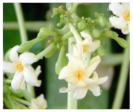 |
| Citrus aurantium | Orange blossom | Rutaceae | 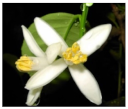 | |
| Cocos nucifera L. | Coconut flower | Arecaceae |  | |
| Dimocarpus longan | Longan flower | Sapindaceae | 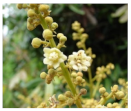 | |
| Musa sp | Banana flower | Musaceae | 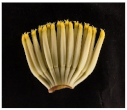 | |
| Non- fruit flower | Antirrihinum majus | Snapdragon | Plantaginaceae | 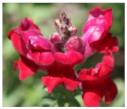 |
| Brassica oleracea var. italica | Broccoli | Brassicaceae | 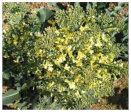 | |
| Calendula officinalis | Marigold, Pot Marigold, Calendula | Asteraceae | 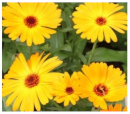 | |
| Clitoria ternatea | Butterfly pea | Fabaceae | 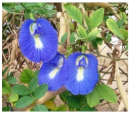 | |
| Crocus sativus | Saffron | Iridaceae | 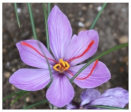 | |
| Cucurbita pepo var. melopepo | Zucchini | Cucurbitaceae |  | |
| Cynara cardunculus var. scolymus | Artichoke | Asteraceae | 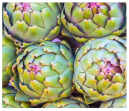 | |
| Dianthus sp | Carnation | Caryophyllaceae | 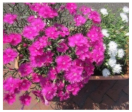 | |
| Etlingera elatior | Torch ginger | Zingiberaceae | 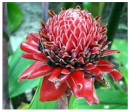 | |
| Geranium sanguineum | Geranium | Geraniaceae |  | |
| Hibiscus sabdariffa | Rosella | Malvaceae | 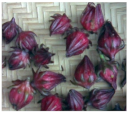 | |
| Ixora coccinea | Ixora | Rubiaceae |  | |
| Jasmimum sambac | Jasmine | Jasmineae | 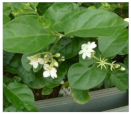 | |
| Moringa oleifera | Moringa, horseradish | Moringaceae |  | |
| Nasturtium officinale | Watercress | Brassicaceae |  | |
| Polianthes tuberosa | Tuberose, Agave | Asparagaceae | 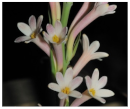 | |
| Rosa | Rose | Rosoideae |  | |
| Sesbania grandiflora L. | Agathi, Sesbania | Fabaceae | 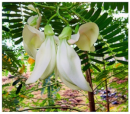 | |
| Tropaeolum majus | Nasturtium | Tropaeolaceae | 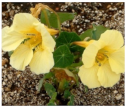 | |
| Viola x wittrockiana | Pansy | Violaceae | 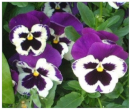 |
| Edible Flower | Total Phenolics | DPPH | FRAP | ABTS | Health Benefits | Ref. |
|---|---|---|---|---|---|---|
| Bougenville hybrid | 120.7 mg GAE/g | L: 79.62% H: 91.44% | L: 58.80% H: 126.6% | N/A | Analgesic, antidiabetic, anti-inflammatory, antimicrobial, antioxidant, anticancer | [25] |
| Brassica oleracea | 0.57 mg GAE/g | 2.71 μmol TE/g | N/A | N/A | Antioxidant, anticancer | [26] |
| Brassica oleraea var. italica | 10.27 mg GAE/g | 3.85 μmol TE/g | N/A | N/A | Antioxidant, anticancer | [26,27] |
| Calendula arvensis | 50.26 mg GAE/g | 20.9 IC50 μg/mL | 203.96 mg AAE/g | N/A | Antioxidant, antimicrobial, anticancer | [28] |
| Calendula officinalis | 34.27 mg GAE/g | 34.75 mg TE/g | 58.96 mg TE/g | 48.15 mg TE/g | Antioxidant, anti-inflammatory, antimicrobial | [29] |
| Carica papaya | 0.76 mg GAE/g | 64.07% | N/A | N/A | Antioxidant, antibacterial | [30] |
| Citrus aurantium | 87.96 mg GAE/g | 87.15 IC50 μg/mL | N/A | N/A | Antioxidant, antimicrobial, neuroprotective | [31] |
| Clitoria ternatea | 76.90 mg GAE/g | 0.76 IC50 μg/mL | 10.91 mM TE/g | 4.16 mM TE/g | Antioxidant, anticancer, neuroprotective | [32] |
| Cocos nucifera | 222.61 mg GAE/g | 40.5 IC50 μg/mL | 89.84 IC50 μg/mL | 66.94 IC50 μg/mL | Antioxidant, antidiabetic, cytoprotective, hepatoprotective | [33,34] |
| Dianthus carmelitarum | 12.6 mg GAE/g | 1.22 IC50 μg/mL | 238 mM TE/g | N/A | Antioxidant, antigenotoxic, antimicrobial, anticancer | [35] |
| Dimocarpus longan Lour. | 476.8 mg GAE/g | 3.81 IC50 μg/mL | N/A | 8.8 mM TE/g | Antioxidant, antiinflammatory, antidiabetic | [36,37] |
| Etlingera elatior | 4.85 mg GAE/g | 9.52 IC50 μg/mL | 19.43 mmol FE/g | N/A | Antioxidant, antimicrobial, neuroprotective | [38] |
| Hibiscus sabdariffa | 29.2 mg GAE/g | 78% | 2.31 mM TE/g | 7.8 mM TE/g | Anti-inflammatory, antioxidant, anticancer | [39,40,41] |
| Moringa oleifera | 19.31 mg GAE/g | 14.57 IC50 μg/mL | N/A | N/A | Antioxidant, anti-inflammatory | [42] |
| Musa ABB | 9.44 mg GAE/g | 27.96 μmol TE/g | 20.6 μmol TE/g | 30.66 μmol TE/g | Antioxidant, antidiabetic, DF rich source, neuroprotective | [43] |
| Musa sp. vVar. elakki bale | 121.8 mg GAE/g | 9.35 IC50 μg/mL | 39.03 mM AA/g | N/A | Antidiabetic, anti-AGEs, antimicrobial | [44,45] |
| Nasturtium officinale | 1.44 mg GAE/g | 7.76 μmol TE/g | N/A | N/A | Antioxidant, anticancer | [26] |
| Rosa damascena Mill | 233.56 mg GAE/g | 74.03% | 0.64 μg/mL | N/A | Antioxidant | [46] |
| Tagetes erecta | 28.9 mg GAE/g | L: 85.70% H: 94% | L: 60.92% H: 203.8% | N/A | Anti-inflammation, neuroprotective | [25] |
| Tropaeolum majus | 12.95 mg GAE/g | N/A | N/A | 9.51 μmol TE/g | Antioxidant | [47] |
| Viola wittrockiana | 44.88 mg GAE/g | 26.1 IC50 μg/mL | 35 mmol Fe/g | N/A | Neuroprotective, antioxidant | [48,49] |
| Edible Flower | Compounds | Assessment | Activities | Ref. |
|---|---|---|---|---|
| Butea monosperma (Lam.) Taubert | Butrin, isobutrin | In vivo | Suppressed IL-1β, IL-6, IL8, PGE2 | [68] |
| Ginkgo biloba L. | Bilobetin, isoginkgetin | In vivo | Suppressed NO, TNF-α, IL-6, PGE2, iNOS, COX-2 | [69] |
| Hibiscus sabdariffa L | Delphinidin 3-sambubioside, delphinidin | In vitro, In vivo | Suppressed iNOS, NO, IL-6, MCP-1, TNF-α | [66] |
| Moringa oleifera | Tannins (not specific) | In vitro | Inhibited protein denaturation in 58%–101% | [42] |
| Rosa rugosa Thunb | Ellagic acid | In vivo | Suppressed NO, PGE2, TNF-α, IL-6, IL-1β, iNOS, COX-2 | [67] |
| Sesbania grandiflora L. Fabaceae | Flavonoids (not specific) | In vivo | Inhibited edema formation up to 79% in 5h | [70] |
| Edible Flower | Compounds | Method | Microorganisms | Ref. |
|---|---|---|---|---|
| Citrus aurantium L. | Quinic acid | Agar well-diffusion | E. coli, P. aeruginosa, S. aureus, B. cereus | [73] |
| Etlingera elatior | Gallic acid, caffeic acid, tannic acid | Agar well-diffusion | S. aureus, B. subtilis, L. monocytogenes, E. coli, S. typhimurium, P. aeruginosa | [18] |
| Hibiscus sabdariffa L. | Phenolics (not specific) | Agar cup diffusion | Inhibited E. coli, S. aureus, Str. Mutans, P. aeruginosa | [75] |
| Rosa rugosa | Gallic acid | Micro-broth dilution | S. epidermidis, S. aureus, B. subtilis, M. luteus, E. coli, K. pneumoniae, P. aeruginosa, Proteus mirabilis) | [72] |
| Sesbania grandiflora | Rutin | Agar well-diffusion | S. aureus, S. flexneri, S. typhi, E. coli, Vibrio cholera | [71] |
| Edible Flower | Compounds | Assessment | Cancer Lines | Ref. |
|---|---|---|---|---|
| Calendula officinalis | Chlorogenic acid, quercetin, isorhamnetin | In vitro (MTT assay) | Breast cancer cell line (MCF-7, MDA-MB-231, Hs578T) | [86] |
| Carica papaya | Stigmast-4-ene-3-one, benzyl β-D-glucopyranoside, uracil | In vitro (SRB assay) | Breast cancer cell line (MCF-7), cervical cancer (HeLa), hepatocellular (Hep-G2), lung carcinoma (NCI-H460) | [87] |
| Etlingera elatior | Gallic acid, caffeic acid, tannic acid | In vitro (MTT assay) | Human breast carcinoma cell lines (MCF-7 and MDA-MB-231), hepatocellular carcinoma (HepG2), colon carcinoma (HT-29), cervical cancer (HeLa) | [18,88] |
| Musa paradisiaca | Phenolics (not specific) | In vitro (MTT assay) | Cervical cancer cell line (HeLa) | [89] |
| Sesbania grandiflora L. Fabaceae | Flavonoids (not specific) | In vitro (MTT assay) | Human cancer cell line (HeLa) | [70] |
| Edible Flower | Compounds | Assessment | Activities | Ref. |
|---|---|---|---|---|
| Butea monosperma (Lam.) Taub. | Syringic and salicylic acid | In vitro enzyme inhibitory | Inhibited AChE and BuChE | [17] |
| Crocus sativus L. | Crocins | In vivo (morphological evaluation by quantitative histology) | Protect retinal neurons from light damage | [97] |
| Sesbania grandiflora L. | Chlorogenic acid, neochlorogenic acids and catechin hydrate | In vitro enzyme inhibitory | Inhibited AChE and BuChE | [17] |
| Viola x wittrockiana | quercetin-3-O-(6-O-rhamnosylglucoside)-7-O-rhamnoside | In vitro enzyme inhibitory | Inhibited AChE and monoamine oxidase A | [49] |
| Edible Flower | Compounds | Assessment | Activities | Ref. |
|---|---|---|---|---|
| Chrysanthemum morifolium Ramat | Chlorogenic acid and luteolin | In vivo | Reduced blood glucose level, inhibited MCP-1 production | [107] |
| Dianthus calocephalus Boiss | Rutin | In vitro enzymes inhibitory | Inhibited α-glucosidase | [106] |
| Dregea volubilis | Gallic acid, ferulic acid, rutin, ellagic acid, quercetin, cinnamic acid | In vitro enzymes inhibitory | Inhibited α-glucosidase and α-amylase | [20] |
| Musa sp. Var. elakki bale | Phenolics (not specific) | In vivo | Inhibited AGEs formation | [45] |
| Edible Flower | Compounds | Assessment | Activities | Ref. |
|---|---|---|---|---|
| Chrysanthemum indicum Linné | Coumarin, trans-cinnamic acid | In vivo | Lowering serum uric acid levels | [116] |
| Chrysanthemum sinense | Luteolin, diosmetin, apigenin, caffeic acid | In vitro enzyme inhibitory | Inhibition XO enzyme | [117] |
| Hibiscus sabdariffa L. | delphinidin-3-O-sambubioside, cyanidin-3-O-sambubioside, quercetin, rutin, chlorogenic acid | In vivo | Diuretic effect | [65] |
| Edible Flower | Compounds | Assessment | Activities | Ref. |
|---|---|---|---|---|
| Clitoria ternatea L. | 2,4-Dihydroxybenzoic acid, protocatechuic acid, caffeic acid, p-coumaric acid, procyanidin A2, delphinidin-3-O-glucoside, ellagic acid | In vitro | Reduction of hemolysis by altering lipid packaging and protecting against oxidative damage | [127] |
| Prunus avium | Hydroxycinnamic acid, 5-O-caffeoylquinic acid, p-coumaric, quercetin, kaempferol | In vitro | Inhibition hemoglobin oxidation | [128] |
| Thymus satureioides | Caffeic acid, rosmarinic acid, luteolin 7-glycoside, hesperetin | In vitro | Protect and stabilize erythrocyte membrane from lesions | [129] |
Publisher’s Note: MDPI stays neutral with regard to jurisdictional claims in published maps and institutional affiliations. |
© 2021 by the authors. Licensee MDPI, Basel, Switzerland. This article is an open access article distributed under the terms and conditions of the Creative Commons Attribution (CC BY) license (https://creativecommons.org/licenses/by/4.0/).
Share and Cite
B. Prabawati, N.; Oktavirina, V.; Palma, M.; Setyaningsih, W. Edible Flowers: Antioxidant Compounds and Their Functional Properties. Horticulturae 2021, 7, 66. https://doi.org/10.3390/horticulturae7040066
B. Prabawati N, Oktavirina V, Palma M, Setyaningsih W. Edible Flowers: Antioxidant Compounds and Their Functional Properties. Horticulturae. 2021; 7(4):66. https://doi.org/10.3390/horticulturae7040066
Chicago/Turabian StyleB. Prabawati, Nadhila, Viki Oktavirina, Miguel Palma, and Widiastuti Setyaningsih. 2021. "Edible Flowers: Antioxidant Compounds and Their Functional Properties" Horticulturae 7, no. 4: 66. https://doi.org/10.3390/horticulturae7040066
APA StyleB. Prabawati, N., Oktavirina, V., Palma, M., & Setyaningsih, W. (2021). Edible Flowers: Antioxidant Compounds and Their Functional Properties. Horticulturae, 7(4), 66. https://doi.org/10.3390/horticulturae7040066









